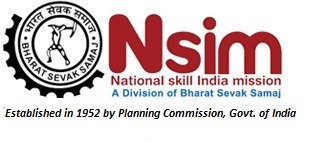Stories you may like
Ceramics designers create designs for a range of pottery objects that are then made by shaping and firing clay. These objects can include:
-
ceramic sculpture
-
domestic and commercial tableware and kitchenware
-
garden ceramics
-
giftware
-
jewellery
-
wall and floor tiles.
Ceramics designers working for large companies interpret a product brief and turn it into a commercially successful design for mass production.
Ceramics designers who are self-employed or work for small companies are more likely to both design and make their own, one-off or limited edition designs.
There is some crossover - self-employed designers may also undertake design commissions for major companies, providing a design to be mass produced elsewhere.
Responsibilities
As a ceramics designer working for a large company in industry, you'll be responsible for creating designs for mass production and may carry out the following activities:
-
interpreting and working to a brief - including the materials to be used, e.g. bone china, porcelain, earthenware or stoneware, and the amount of money available - to design a new collection
-
creating designs, liaising with clients and overseeing production to ensure the brief is met
-
deciding on decorative techniques and glazes
-
conducting market research to find out what competitors are producing and how well existing lines are doing.
Often tasks for self-employed designers, or for those working for small companies, are likely to include:
-
designing and producing one-off objects
-
selecting materials appropriate to the design
-
shaping clay by hand, thrown on a wheel or in a mould
-
loading kilns, glazing, decorating and firing products
-
preparing work for sale and exhibition
-
selling products directly from a studio, market stalls or crafts fairs, online, by mail order or through specialist craft shops and galleries
-
developing clear artistic objectives and a business plan
-
attending appropriate courses to learn new techniques and to keep up to date with current trends
-
teaching in further education and running community workshops.
Qualifications
Although a career as a ceramics designer is open to graduates of any discipline, in practice, nearly all will have studied an art or design degree such as:
-
applied arts or design
-
ceramics
-
3D design.
If your degree is unrelated, studying at Masters level may be an option. While not essential, a postgraduate qualification may be useful to hone practical skills and prepare for professional life.
A variety of part-time courses are available in further and adult education institutes, providing the opportunity to develop ceramics skills.
Skills
You'll need to show:
-
creative flair and practical ceramics skills
-
time management and the ability to work to deadlines
-
excellent communication skills
-
organisational ability
-
attention to detail
-
patience
-
photography, computer software and design skills
-
a good understanding of health and safety issues.
Employers
Many ceramicists are self-employed, working to commission or selling work directly from the studio, through websites, galleries, at craft markets and specialist retail outlets.
Career prospects
Many aspire to self-employment in the ceramic craft/studios sector and concentrate on design and production of individual styles and products. To help with this, ceramicists often develop a portfolio career, combining self-employment with:
-
arts management
-
community arts work
-
gallery management
-
teaching.
Combining varied roles may spark creative ideas and keep you motivated.
For those employed in larger companies, career progression comes from working with production teams, liaising with external clients and seizing opportunities to be innovative. There may be opportunities in research departments or for promotion to managing teams of designers within the studio. Increased responsibility will inevitably bring an increase in non design-related tasks.
If you opt for self-employment, career development will come by building your reputation through exhibition success and your visibility through networking, writing articles and giving talks about your work and techniques.













User's Comments
No comments there.